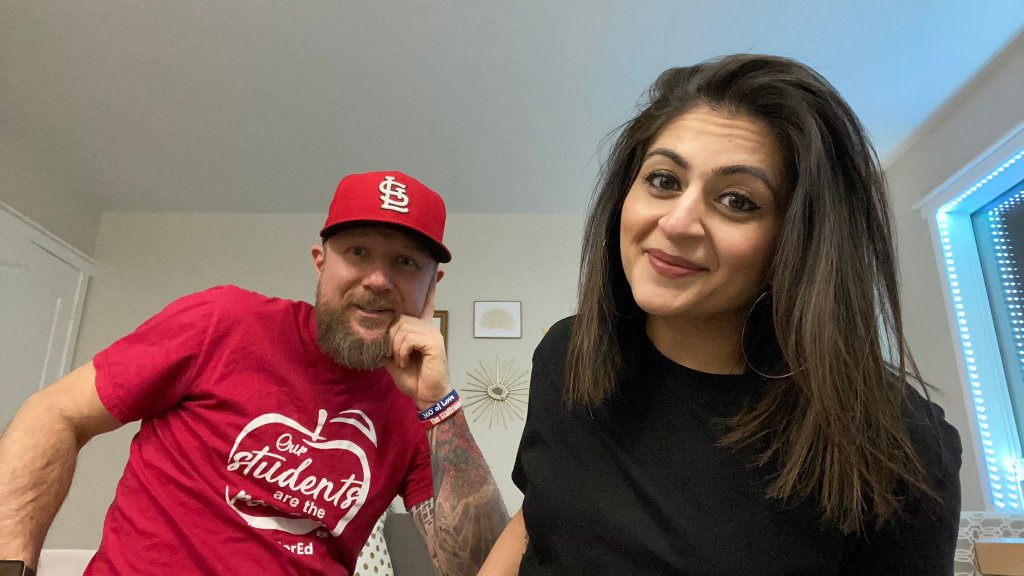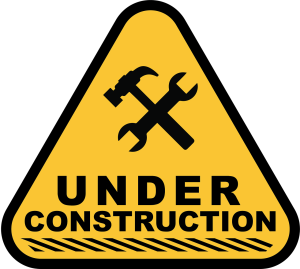TL;DR:
- There are three main types of criticism: destructive, constructive, and instructive.
- Destructive criticism tears down; constructive criticism builds together, and it identifies a problem and offers solutions. Instructive criticism adds on to what someone knows.
Let me start by sharing four related facts you may not know about me.
- I am hard-of-hearing. There are times that I literally do not hear everything someone says. So my brain fills in the gaps with what I think they said before I respond.
- This is not a fool-proof process. Thus, there are many times when what I thought I heard was not what the person said.
- Sometimes this mishearing leads me to think of a concept in a brand-new way. I have some pretty nifty hearing aids that allow me to stream audio from my phone directly to my ears.
- Sometimes the audio skips, causing my brain to do the same thing I described above.
This happened recently.

I was listening to a recent episode of the Staffroom Podcast with Chey Cheney and Pav Wander. Chey said something about “constructive criticism.”
My audio skipped right at the onset of the word and so all I physically heard was “-nstructive criticism.” My brain, doing what it always does, filled in the gap but didn’t quite get it.
Instead of realising that Chey was talking about “constructive” criticism, I heard “instructive” criticism and this immediately got me very excited.
Then I took it back a few seconds and realised what he actually said. But by then it was too late.
I was down the rabbit hole of what “instructive” criticism could be and how it might differ from “constructive” and “destructive” criticism.
Before examining the adjectives, it is worth noting that criticism, from a philosophical standpoint, is the “practice of judging the merits and faults of something” (wikipedia.org). I love learning about word parts and meanings. For example, a “structure” is something that is built, coming from Latin structura “a fitting together, adjustment; a building, mode of building;” figuratively, “arrangement, order,” from structus, past participle of struere “to pile, place together, heap up; build, assemble, arrange, make by joining together (etymonline.com).
The Latin prefix “de-” indicates an undoing. And the suffix “-ive” is a word part that turns an adjective into a verb, often meaning “the process of.” From these parts, we can determine that “destructive” is “the process of unbuilding, or of taking down.” On the other hand, the prefix “con-” means “with” and so “constructive” is “the process of building together.”
Destructive criticism tears down.
It is the kind of criticism that cruelly asks, “Why did you do that” in a way that makes it clear that that should not have been done. It is often associated with insults and cutting remarks: “I was in your classroom and I noticed that your students were out of their seats and talking loudly. Don’t you have any control over your students? You are the adult! Act like it!”
Such criticism is not meant to help. It only serves to tear down. And in doing so, it gives a feeling of smug superiority. (I am embarrassed to admit that I have given criticism such as this, often out of frustration, much more than I would prefer.)
Constructive criticism builds together.

It is the kind that identifies a problem and offers solutions. It should be descriptive without being judgmental of the person. (The judgment is reserved for the action.) This is the kind that we most often ask for and the kind that we are often encouraged to give others: “While in your classroom, I noticed that there were three students out of their seats and four students who were talking at the same time. Help me to understand what was happening.” Constructive feedback given in this way opens the door for communication and understanding without passing judgment.
So what about this idea of “instructive” criticism?
What would that mean? As I pondered this, I wondered what that prefix “in-” means. The first definition I found said that it means “not, opposite of, without.” That didn’t seem to make sense so I looked further and saw that another definition is “on, upon.” As educators, we are familiar with the idea of “instruction” as adding to what someone knows. Can this accompany criticism?
Consider the following. “While I was in your classroom, I noticed that three students were out of their seats while you were giving instructions and four other students were talking to each other. This has happened to me on several occasions. It is sometimes easy to keep on giving directions to the rest of the class. But I have found that this usually results in me repeating the directions several times. One thing I have tried to do, instead, is to quietly walk over to the students who are talking and give my directions from there. Quiet proximity can be a powerful tool to redirect students without causing them to feel embarrassed or called out in class.”

This approach couples the criticism (observation of off-task behaviour) with sharing an example of how to address the problem (quiet proximity).
This approach is best deployed when an individual approaches you and asks for help with solving a problem. Trust is key to this process! Leading up to the instructive criticism, there should be discussions about perceptions of what the problem may be, what has been tried, what has worked, and what hasn’t.
Regardless of your role, you have opportunities every day to offer criticism to others. It is up to you what lens you choose to give that criticism. Will it be destructive, constructive, or instructive? Are you going to tear them down, build together, or add on? The choice is yours.
Criticize wisely.
Criticize…better.
About Alex T. Valencic
Alex Valencic is an educator, former small business owner, Boy Scout, volunteer drug prevention specialist, unrepentant bibliophile, and a geek of all things. He worked as a substitute teacher for three years before achieving his lifelong dream of teaching fourth grade, which he did for seven years in Urbana, Illinois, before accepting his current position as the Curriculum Coordinator for 21st Century Teaching and Learning in Freeport, Illinois, where he not only supports innovative educational practices in the classroom but also oversees social studies, science, and nearly all of the elective courses in the district. 

